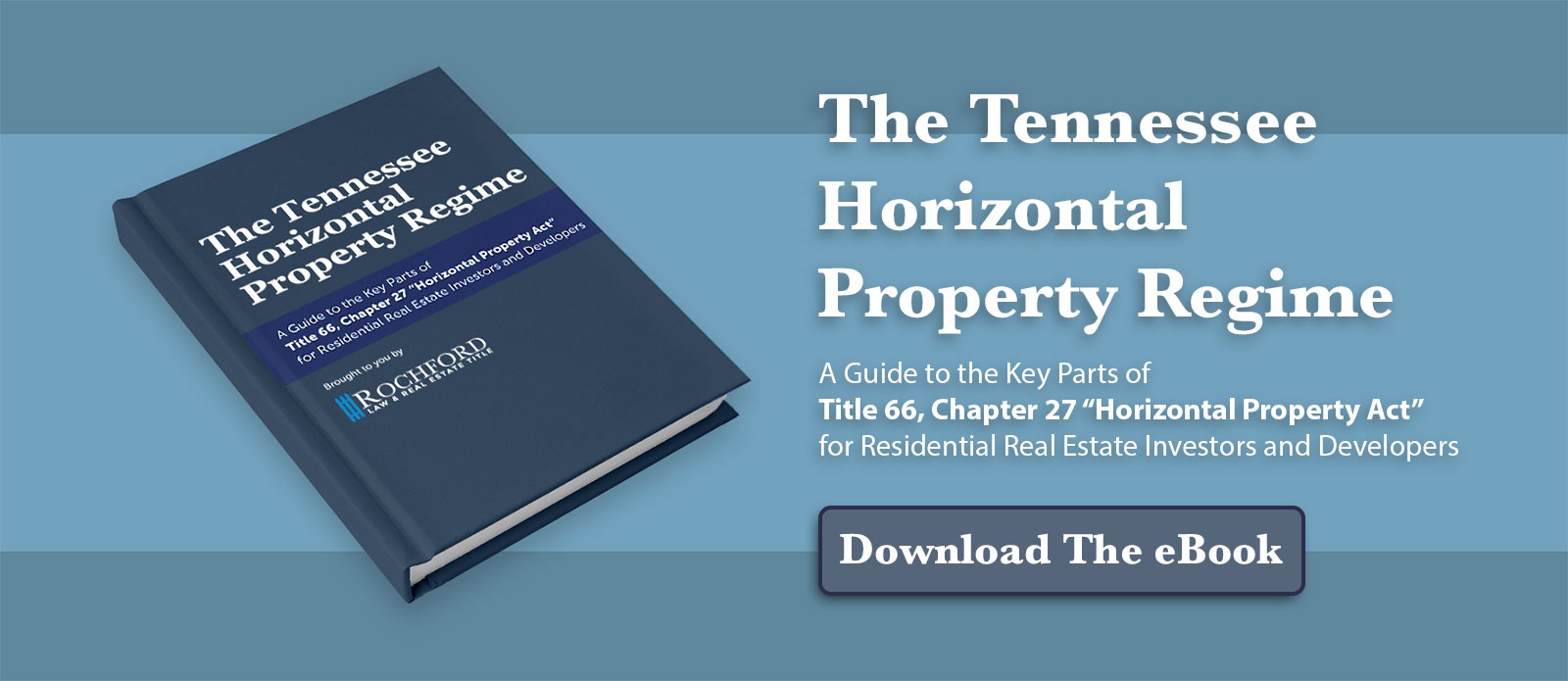How To Turn One Home Into Two Homes With An HPR
- Posted on January 11, 2017
- In Horizontal Property Regime, HPR, Real Estate Attorney, Real Estate Investment, Real Estate Law, Real Estate Lawyer, Real Estate Nashville, Residential Real Estate Law
HPR stands for Horizontal Property Regime. In case you missed our last article on HPRs, we’ll fill you in before continuing onwards.
A Horizontal Property Regime is a legal way to divide a single property into two different properties, which is something that comes into play quite often in cities like Nashville. With Nashville’s economic boom, it has been estimated that as many as 100 people move here every single day. This has translated to rapid gentrification of Nashville’s urban areas, and a real estate boom. And in neighborhoods like East Nashville, you will often see old, decrepit homes being torn down to make room for TWO new homes. If you’ve ever driven through Nashville, you should know exactly what we’re talking about.
Real estate developers will tear down one old home, build two new ones in its place, and sell them. Have you ever wondered how they are able to get around the zoning regulations in these neighborhoods?
Horizontal property regimes. That’s how.
HPRs In Nashville: 8 Steps
Here’s a bird’s eye view of what needs to happen for you to turn that old home you’ve been thinking about purchasing into an amazing real estate investment. Most of the process is pretty straight forward, except for step number three…
- You buy a property
- You tear down the existing home
- You hire a real estate attorney to form an HPR
- You build 2 new homes
- You sell these homes for profit
So let’s talk about forming an HPR, and how all this works…
STEP ONE: Finding A Surveyor, Get Your Ducks In A Row
If you intend to construct two properties on a single plot of land, your first step is to hire a surveyor to draw up the plans for these homes. You don’t need to worry about the nitty gritty details of the architecture of these houses quite yet. All you need to initiate the formation of an HPR is a drawing of the footprints of the two properties you intend to construct. The property will be divided accordingly.
STEP TWO: The Surveyor Works Their Magic
So now you have found a surveyor, and that surveyor has helped you outline the footprints of your proposed structures. At this point the surveyor will take this diagram to your local planning commission where they will verify that the structures can indeed be built. Two of the main facets that will need to be approved by this commission are location and size of your proposed houses. There are also certain regulations that will vary from neighborhood to neighborhood that will need to be observed. Pending the approval of your plans, you can move on to step three…
STEP THREE: Find A Real Estate Lawyer
This is where we could come in. Once your plans have been approved, it’s time to find legal counsel. Remember that diagram that your surveyor helped you sketch out? Now you need to give it to your attorney. At this point, the diagram should outline the following elements of your proposed pair of houses…
- Private Elements (like the inside of each home)
- Limited Common Elements (like yards)
- Common Elements (like sidewalks)
STEP FOUR: The HPR Is Born
Once the aforementioned information has been nailed down, it’s time for your real estate attorney to draft your HPR. The drawing that we’ve spent the last 3 steps talking about will attached to the HPR document. Once the HPR draft has been completed, you (the property owner) will need to sign it. Finally, the HPR will be recorded with your local municipality.
STEP FIVE: Creating A Home Owner’s Association
Next, your real estate attorney will create a homeowners association (HOA) for you. The creation of this HOA is almost always required because, legally speaking, the (future) residents of the two structures that you are preparing to build will be joint-owners of the same property. The homeowner’s association will define the legal obligations and rights of each party, and give legal recourse to each respective party in the event of any issues.
STEP SIX: Negotiating Your Construction Contract
Now that (most of) the complicated legal stuff is out of the way, it’s time to find somebody to actually build these houses. We would advise you to retain your legal counsel during the negotiation of your contract. You need somebody to look out for your interests!
STEP SEVEN: Obtaining Your Building Permit
So now you’ve found your builder, and signed a contract with that person. You’re almost there! But before any construction can start, your builder needs to obtain a building permit. Your builder should have no problem securing this permit, provided that the scope of their construction does not exceed the scope of the approved plans or violate any regulations set forth by the law.
After that, it’s time to break ground!
Now let’s fast forward to the completion of your construction project. You might want to call your real estate lawyer again!
BONUS: Your Real Estate Attorney Can Help You Make The Sale!
Now that you’ve jumped through the appropriate legal hoops, don’t let your hard work go to waste! It’s highly advisable that you ask your real estate lawyer to facilitate the sale of the homes you built. Your attorney will draft the purchase and sale agreements, as well as handle the closings. This attorney will also be able to consult with the property owner in the event that disputes arise throughout the process.
Looking For A Real Estate Lawyer In Nashville?
Then you’ve come to the right place. Think of us as your one-stop-shop for the world of real estate law. If you are in need of our legal services, don’t hesitate to get in touch!
Subscribe for Updates
Latest Posts
- Commercial Leases – Important Considerations
- Intestate Deaths, Heirs and Real Estate – When is Probate Required?
- What is a Partition Lawsuit and Why are Partition Lawsuits Filed?
- What Is the Multiple Listing Service (MLS) & How Realtors Use It in Nashville, TN
- The Top 7 Legal Mistakes FSBO Sellers Make (and How to Avoid Them)




